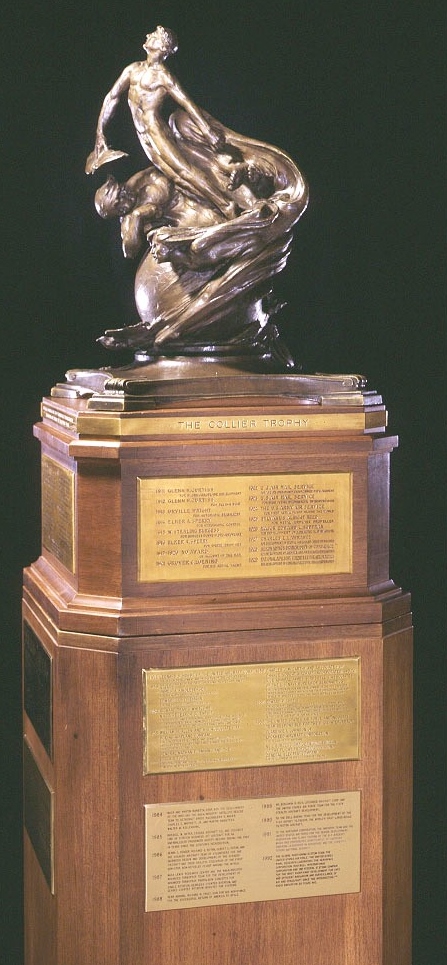Nomination Period: December 1 – January 31
** NEW NOMINATION GUIDELINES ARE NOW IN EFFECT. PLEASE READ UPDATED GUIDELINES BEFORE SUBMITTING YOUR NOMINATION. INCOMPLETE NOMINATIONS WILL NOT BE ACCEPTED. **
Nomination Guidelines for the Collier Trophy

Robert J. Collier Trophy
Displayed permanently at the National Air and Space Museum
About the Award
The Robert J. Collier Trophy is awarded annually “for the greatest achievement in aeronautics or astronautics in America, with respect to improving the performance, efficiency, and safety of air or space vehicles, the value of which has been thoroughly demonstrated by actual use during the preceding year.” The list of Collier winners represents a timeline of aviation, as many of the awardees mark major events in the history of flight.
In addition to being an aviator, humanitarian, and sportsman, Mr. Collier (the only son of Collier’s Weekly publisher P.F. Collier) was a prominent publisher whose family created the popular Colliers Weekly. While President of the Aero Club of America, National Chapter (now the National Aeronautic Association), Collier commissioned the trophy in 1910 with the intent to encourage the American aviation community to strive for excellence and achievement in aeronautic development. The 525 pound trophy was commissioned of Baltimore sculptor Ernest Wise Keyser and was originally called the Aero Club Trophy. It was officially renamed the Robert J. Collier Trophy in 1944 and put on permanent display at the National Air and Space Museum in 1951.
In recognizing the worth and future of aviation, Mr. Collier proclaimed the ideal that, “the flying machine should be unselfishly and rapidly developed to its ultimate potential for economic advancement in America.” In support of his statement, Collier was the first person to purchase an airplane from the Wright brothers for personal use. Shortly thereafter, he loaned his aircraft to the U.S. Army for flight evaluations at Fort Sam Houston in San Antonio, Texas, which led to the first military orders for a flying machine. Robert J. Collier died in 1918 after completing his military service in World War I.
Click here to view a video of 100 years of the Collier Trophy.
- Collier Recipients 2020-2029
- Collier Recipients 2010-2019
- Collier Recipients 2000-2009
- Collier Recipients 1990-1999
- Collier Recipients 1980-1989
- Collier Recipients 1970-1979
- Collier Recipients 1960-1969
- Collier Recipients 1950-1959
- Collier Recipients 1940-1949
- Collier Recipients 1930-1939
- Collier Recipients 1920-1929
- Collier Recipients 1911-1919
For additional information, please e-mail us at [email protected].

